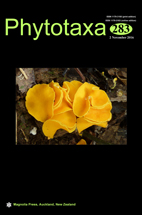Abstract
Dialium (Leguminosae, Dialiinae) is pantropical and comprises about 40 species. Presently, only one species occurs in the Neotropics, Dialium guianense, which is found from eastern Mexico to northeastern Minas Gerais, Brazil. The objective of this study was to carry out a thorough taxonomic revision of Dialium in the Neotropics, to determine if species diversity of the genus in this region is underestimated. The study analyzed 765 collections, from 18 herbaria throughout the world, which revealed three groups of specimens that clearly differ from each other and from D. guianense. Morphology and biogeography support their recognition as new species. Dialium hexaestaminatum occurs in northern Colombia and western Venezuela, and is characterized by generally having six stamens, while the other neotropical species have only two. Dialium congestum occurs in Ecuador and southern Colombia and is mainly characterized by the presence of congested inflorescences, unlike the lax inflorescences found in the other neotropical species. Dialium rondoniense occurs in the state of Rondônia and the most southern part of the state of Amazonas, Brazil. It is characterized by the dense coverage of trichomes on the abaxial surface of the leaflets, as well as the petiolules, petioles, leaf rachis and branches, while the other neotropical species are generally glabrous or covered with sparse trichomes that are imperceptible to the bare eye. The results show that the diversity of Dialium in the Neotropics was underestimated and that the genus has four species in the region. An identification key, illustrations and descriptions of the species are provided.

